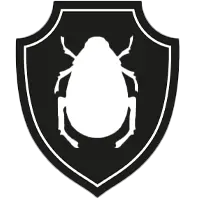I know dealing with wasps in your walls can be quite a distressing experience. As a seasoned pest control specialist, I’m here to help guide you through this process.
After reading this article, you’ll understand how to identify signs of wasp infestation, explore ways to eradicate them, and learn preventative measures to avoid future issues.
Let’s dive in to make your home a safer, wasp-free space again.
How to get rid of wasps in walls – 3 solutions
Dealing with a wasp infestation in your walls can be a frightening and challenging task. In this section, we’ll explore three reliable solutions that can help you reclaim your home from these unwelcome guests.
Use of wasp sprays and dust
Using a good quality wasp spray or dust is often the first line of defense against wasps. These products are designed to kill wasps quickly and can be applied directly to the nest or entrance hole in your wall. Remember, safety should always be your top priority. Wear protective clothing and only attempt this method if the nest is small and easily reachable.
The role of professional pest control services
Sometimes, the infestation is simply too large or too dangerous to handle by yourself. That’s where professional pest control services come in. They have the expertise and equipment to safely and effectively remove the wasps from your walls. It’s a worthwhile investment for your peace of mind and safety.
Natural and home remedies for eliminating wasps
If you’re looking for a more natural approach, there are several home remedies that can be effective. One popular method is the use of essential oils like peppermint, which wasps tend to dislike. A mixture of water and a few drops of oil can be sprayed around the infested area. Again, safety first – if the infestation is large, it’s best to call in professionals.
Having looked at these solutions, you’re probably wondering how to tell if you have a wasp infestation in the first place. In the next section, we’ll talk about how to identify signs of a wasp infestation in your walls.
Identifying signs of a wasp infestation in walls
In order to effectively combat a wasp infestation, the first step is identifying the problem. In this section, we’ll look at common signs of a wasp infestation in your walls.
Visible signs of wasp activity
One of the most obvious signs of a wasp infestation is seeing wasps frequently around your home, especially near a certain wall. You might also notice wasps entering and exiting a hole or crack in the wall. This could be the entrance to their nest.
Audible cues for a wasp infestation
You may not always see the wasps, but you could hear them. A buzzing or humming sound from within your walls can indicate a wasp nest. If you hear such noises, it’s best to call a professional immediately.
The potential damage caused by wasps
Over time, a wasp infestation can cause physical damage to your walls. Look out for signs like discolored patches, peeling paint, or even small holes. These signs could indicate a large, established nest inside the wall.
Identifying a wasp infestation is only half the battle. The next step is prevention. In the upcoming section, we’ll discuss methods for preventing wasps from nesting in your walls.
Prevention methods for wasps nesting in walls
Now that we’ve identified the signs of a wasp infestation, it’s time to prevent future invasions. Here, we’ll discuss a few strategies that can deter wasps from turning your walls into their home.
Regular home maintenance and inspection
Preventing a wasp infestation begins with maintaining your home. Regularly inspect your home’s exterior for cracks, holes, or other potential entrances for wasps. Seal these points promptly to avoid giving wasps an invitation.
Natural deterrents for wasps
Certain plants and natural substances can help deter wasps. For instance, planting mint or citronella around your home can keep wasps away, as they dislike the strong scent of these plants. Similarly, hanging a false wasp nest or ‘decoy nest’ can also deter wasps, as they’re generally territorial creatures.
Engaging professional pest control for prevention
Consider having regular inspections by a pest control professional. They can spot potential infestation sites early and offer preventative treatments. This can save you the hassle and danger of dealing with a full-blown infestation.
We’ve covered a lot of ground from identifying wasp infestations to implementing preventative measures. As we move towards the conclusion, we’ll summarize key points and direct you towards additional resources for managing wasps in your walls.
Conclusion
Throughout this article, we’ve journeyed from understanding the problem of wasps in walls to uncovering ways to combat it.
We’ve explored three solutions to eradicate them, identified common signs of an infestation, and discussed strategies for prevention. I hope you found these insights helpful.
Remember, when in doubt, always turn to a pest control professional to ensure your home is safe and wasp-free.

